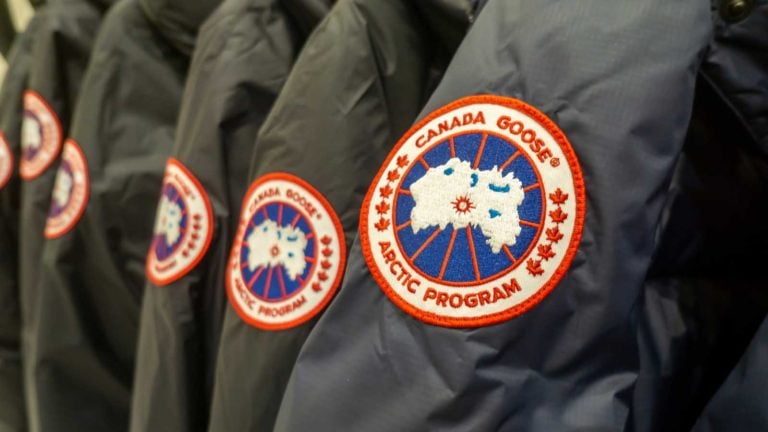Hello, Reader.
Tom Yeung here with today’s Smart Money.
In A Tale of Two Cities, Charles Dickens writes about – you guessed it – two different cities.
The 500-page novel is a whirlwind tour of London and Paris and focuses on how characters are shaped by their environments in the late 1700s. The relative law and order of London allows our protagonists to generally succeed, while the chaos of Paris’s “Reign of Terror” swallows them whole.
The effects of President Donald Trump’s tariffs have created a similar situation.
On one side of the moat, non-tariffed firms are finding enormous success as their competition melts away. On the other side are companies liquifying on a warm Parisian day.
Perhaps most surprisingly, this appears to be taking Wall Street by surprise.
Much like the characters in A Tale of Two Cities, investors seem to think their investments are immune from outside effects… until the truth is bearing right down on them.
So, in today’s Smart Money, I’d like to highlight a company on the right side of the tariff moat and one on the wrong side.
Then, I’ll share the strategy that Eric used to make a 200% gain off of the company on the right side in just seven weeks.
Let’s dive in…
The Right Side of the Tariff Moat
The company on the right side of the moat is Canada Goose Holdings Inc. (GOOS).
Here’s Eric with a brief description:
Canada Goose is a global performance luxury and lifestyle brand founded in 1957. Like Patagonia and North Face, Canada Goose manufactures and sells a range of outdoor sportswear like parkas, puffers, rain jackets, and hoodies – both for genuine outdoor adventurers and for urban chic wannabes.
To understand how Eric got the 200%-plus gain on Canada Goose, we need to back up to last Wednesday, when the company announced first-quarter results that blew Wall Street’s expectations out of the water. Revenues of $268 million topped forecasts by 9%, while adjusted earnings per share of $0.23 trounced them by 44%. The company did not give forward guidance, but investors filled in the blanks anyway after hearing from management.
Here’s Canada Goose Chief Operating Officer Beth Clymer during prepared first-quarter earnings call remarks (highlights are our own)…
As they stand right now, the new United States tariffs have a minimal impact on our P&L. Approximately 75% of our units are made in Canada, virtually all complying with USMCA requirements, which means as Dani mentioned earlier, they are currently exempt from tariffs.
Shares surged an additional 30%.
And the Wrong Side…
The company on the wrong side of the moat, and one of Canada Goose’s rivals, is VF Corp. (VFC), the owner of The North Face, a seller of mass-market camping gear and winter clothing.
The apparel rollup – its other brands include Dickies, Timberland, and Vans – is a major importer of textiles from East Asia, and its current situation could hardly be more different than Canada Goose’s.
The same day Canada Goose announced these blowout results, VF saw its shares move 17% in the opposite direction.
For the quarter, VF’s revenues of $2.2 billion missed expectations by 2%. Losses per share of $0.13 were only a cent better than forecasted. It was a weak quarter overall, with the Americas and Europe underperforming.
Meanwhile, VF’s management warned that tariffs, if unmitigated, would cost the firm $150 million on an annualized basis going forward. That exceeds the $145 million the firm generated in pretax income last year.
To make matters worse, the Colorado-based importer is seeking to offset these costs with actions that will certainly cut into its quality, supplier relationships, or both. Here’s from VF’s Chief Financial Officer, Paul Vogel…
We actually believe we can offset the impact from the tariffs, and we’ve activated our plans to do so. This entails cost management, select sourcing relocations and pricing actions. We are leveraging our deep and long-standing relationships with our partners and are working with them to ensure that we have the right cost structure. And on pricing, our approach is strategic and thoughtful.
Analysts have since slashed their 2026 earnings estimates by 10%, a sign they’re not fully convinced of this offset.
Three Reasons to Buy Canada Goose
Eric had no interest in VF. The company is juggling Asian supply chains and squeezing every drop out of its cost structure. Plus, it’s more expensive than Canada Goose. Of the common valuation multiples, only the forward price-to-earnings ratio makes VFC look cheaper… and not even by that much (14.2X vs. 15.7X). (Only a full-blown discounted cash flow model makes VFC look good thanks to the firm’s “asset-light” model.)
But he did like Canada Goose, and for three very good reasons. As he said…
- “Buy Canada” is fast becoming a major trend above the 49th parallel. As a recent Rolling Stone story remarked…
- “Buying Canada” in the U.S. has become more expensive in most cases, but Canada Goose exports its goods to the U.S. duty-free. Under the U.S-Mexico-Canada Agreement (USMCA) President Trump signed during his first term, the U.S. levies no tariffs on apparel and textile exports from Canada to the U.S.
- Because Canada Goose manufactures its products inside Canada, it possesses a competitive advantage in the U.S. against all the sportwear brands that will soon pay massive tariffs on the products they manufacture in China or Southeast Asia and export to the U.S.
Canadian sales were flat, despite the country likely being in a recession, and sales to the Asia Pacific region surged double digits. Outperforming at the international level right now is extremely impressive for a luxury firm that sells $1,650 parkas and $175 T-shirts.
Canada Goose produces almost all of its American-sold products in Canada and is enjoying a tariff-free existence at the expense of rivals.
So, Canada Goose is a leveraged play on U.S.-Canada trade.
Apparel companies typically fight over low margins, so even tiny changes in pricing competition can have enormous effects on net income. This operating leverage is why a 30% tariff on a competitor’s imports was enough to send GOOS shares up more than 70%.
And so, on April 7, the “Liberation Day” market bottom, he recommended his Leverage subscribers buy Long-Term Equity Anticipation Securities (LEAPS) on Canada Goose, which are long-dated options contracts with expiration dates one to three years away.
Following the earnings pop, Eric saw an opportunity for his Leverage subscribers to make significant gains. So, he recommended banking partial profits. Those who followed Eric’s LEAPS strategy pocketed a whopping 200% gain on his Canada Goose call.
Since that initial recommendation, Eric’s recommended LEAPS call on Canada Goose is currently up about 240%.
If you want to learn more about Eric’s LEAPS strategy, be sure to check out his special presentation that explains how anyone can take advantage of LEAPS. In the broadcast, you’ll also learn how to access a special report that lays out three LEAPS trades with the potential to double your money in just a few months.
Click here to learn how to join Leverage and take advantage of this powerful options strategy.
Regards,
Thomas Yeung
Markets Analyst, InvestorPlace


